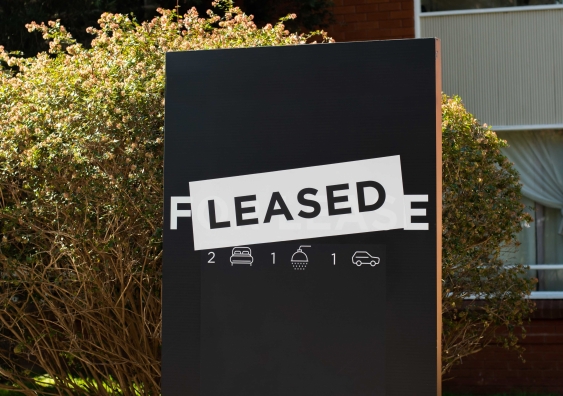Would you benefit from a rent freeze?
Rent hikes are pushing renters to the brink. Can the Australian Greens' rent freeze policy save the day, or will it worsen the crisis?
Rent hikes are pushing renters to the brink. Can the Australian Greens' rent freeze policy save the day, or will it worsen the crisis?

Mandated rent freezes, one of the rental crisis solutions proposed by the Australian Greens, seek to address the urgent needs of renters. The solution involves introducing an┬Ā, followed by the implementation of a rent cap where rent increases are capped within certain limits.╠²
This means that regardless of market fluctuations and rising interest rates, tenants could find solace in knowing their rent payments will remain relatively stable and stress less about their financial situation.╠²┬Ā
ŌĆ£Rent increases have been getting much larger and more common,ŌĆØ said┬ĀDr Chris Martin, Senior Research Fellow in the at ╣·├±▓╩Ų▒ Arts, Design & Architecture.╠²
Research has shown that the national average of asking rents has increased by┬Ā11 per cent in the last 12 months. Renters in Sydney have seen the median average weekly rent for new tenancies soar by┬Ā┬Āover the past year to┬Ā.╠²┬Ā
ŌĆ£When properties are re-let, a new tenancy commences and┬Ā┬Āare getting a higher rent than for the previous tenancy,ŌĆØ┬Āsaid┬ĀDr Martin.
ŌĆ£Most are going for at least┬Ā┬Āmore than previously let. About┬Ā┬Āof properties with existing tenancies have recorded rent increases over the past 12 months, and about┬Ā┬Āare getting increases of more than┬Ā.ŌĆØ┬Ā
With statistics such as these, Dr Martin said┬Āa rent freeze, and a subsequent rent cap, would protect existing tenants from rents rising to similar levels.╠²┬Ā
Dr Martin explained that significant rental increases are a crucial price signal to property owners. This should encourage the supply of new rental properties, ideally from sources outside the existing stock, such as newly constructed dwellings or currently unused and underused properties like second homes and Airbnb listings.╠²┬Ā
ŌĆ£The goal is to expand the rental market by increasing available housing options.╠²┬Ā
ŌĆ£That price signal is currently going into the existing stock; as landlords increase rent prices, tenants are being pushed out of their existing homes. That brings the property to the market but also means thereŌĆÖs another tenant looking for a lower-cost rental property or being made homeless.╠²┬Ā
ŌĆ£By regulating rent increases for existing tenants, the price signal from the new tenancy market is┬Ādirected into sources of genuine new supply,ŌĆØ┬Āsaid Dr Martin.╠²
This approach aims to ensure that the rental market expands in a sustainable manner while simultaneously addressing the immediate needs of tenants facing displacement and housing instability.╠²┬Ā
While the rent freeze policy is designed to alleviate financial stress on renters, crucial questions remain about the impact on landlords.╠²┬Ā
With and mortgage repayments increasing, the policy could have serious implications for homeowners.╠²┬Ā
Dr Peter Swan, a Professor in the School of Banking &┬ĀFinance at ╣·├±▓╩Ų▒ Business School, said┬Āthe rental crisis would become ŌĆ£far worse for tenants and landlordsŌĆØ if the policy came into force.╠²┬Ā
ŌĆ£While it is true that tenants who are not evicted may gain temporarily, tenants as a whole lose as rental accommodation is withdrawn, fewer new places are provided, and maintenance of rent-controlled housing deteriorates.╠²┬Ā┬Ā
ŌĆ£Rental rates rise due to restricted supply, while landlords with sitting tenants suffer. Eventually, a black market evolves with ŌĆśprotectedŌĆÖ tenants unable to move and with the rampant use of sizeable ŌĆśkey moneyŌĆÖ paid by prospective new tenants.╠²┬Ā┬Ā
ŌĆ£The latest version of the in the ACT reveals that pre-existing rent control in Canberra has doubled in its severity in 2019.╠² It now limits rent increases to no more than┬Ā above the increase┬Āin the rent component of the ACT .╠²It was previously 20 per cent.╠²┬Ā┬Ā
ŌĆ£As a result, it has left some landlords no option but to sell their properties, leaving┬Āevicted tenants back on a tighter rental market.ŌĆØ┬Ā
Prof. Swan explained how another example┬Ācan be seen in the of 2019, which imposed a cap on rental increases. ┬Ā┬Ā
According to a 2018 analysis by the on San Francisco legislation, rent control resulted in a in rental supply as landlords converted their properties to exempt building types, subsequently causing a in rents.╠²┬Ā
ŌĆ£The repercussions of these circumstances result in a significant portion of tenants being┬Āat risk of eviction and facing the challenge of re-entering an increasingly competitive rental market, where they may be required to pay, effectively, a substantial increase in rent in the form of a bribe┬Āto secure a new place.╠²┬Ā
ŌĆ£Interest rates will persistently climb until we align with the rates of countries like the US, UK, and others. As a result, these escalations will lead to even higher rental prices and if restrictions were imposed on these unavoidable increases, the current inventory of rental housing will diminish even more,ŌĆØ said Prof.╠²Swan.╠²┬Ā
The rent freeze policy has both positive and negative implications, and it has prompted the need to examine the delicate balance between the needs of renters and the challenges faced by landlords. ┬Ā
ŌĆ£The solution to the crisis lies in boosting the housing supply. However, governments and councils commonly exhibit significant reluctance when it comes to permitting new developments or streamlining bureaucratic processes plagued by excessive regulations and prolonged delays,ŌĆØ┬Āsaid Prof. Swan.╠²┬Ā
This begs the question: should we turn to international renting practices and consider alternative methods? ┬Ā
Dr Martin said: ŌĆ£All these variations on rent regulations should be on the table.╠²
ŌĆ£Scotland implemented a rent freeze in September 2022, and in April 2023 moved to a rent cap of 3 per cent, in most cases. For years, most Canadian provinces have had rent caps - called ŌĆśguidelinesŌĆÖ there - that limits rent increases to a certain percentage rate set by the government.╠²
ŌĆ£Ireland has a system of ŌĆśrent pressure zonesŌĆÖ,┬Āif a local government area records increases in median rents above a certain threshold for successive quarters, a cap kicks in, currently 2 per cent, and not more than once in 12 months.ŌĆØ┬Ā